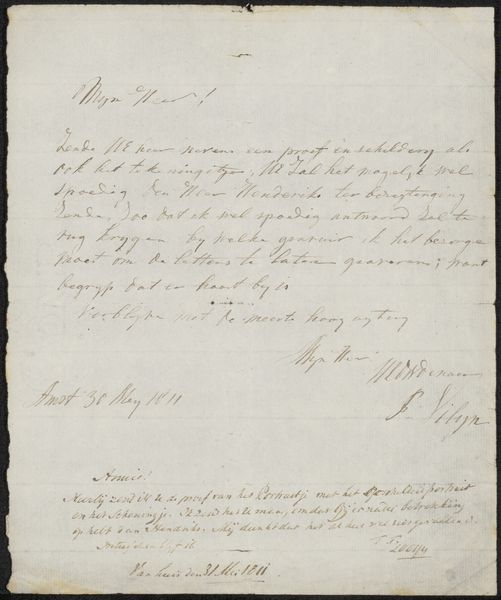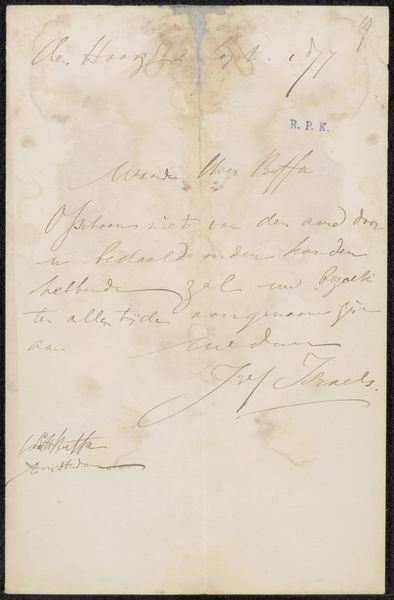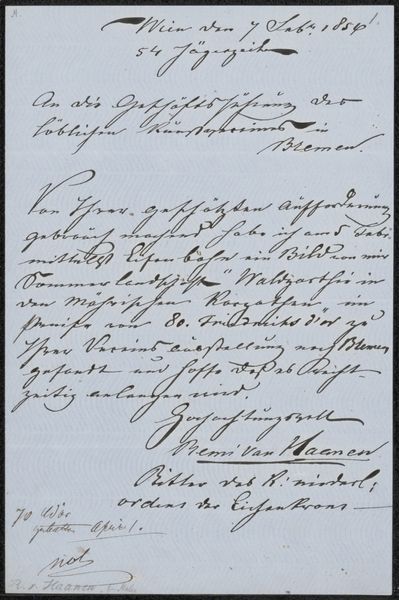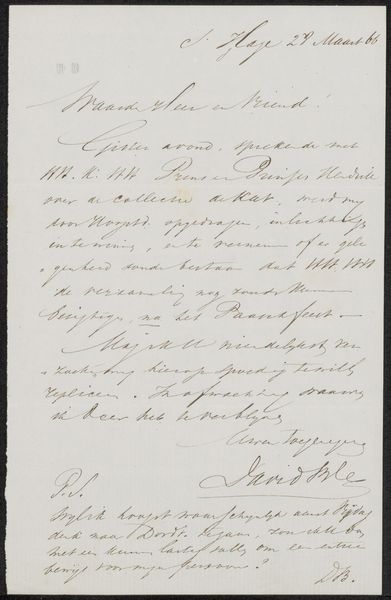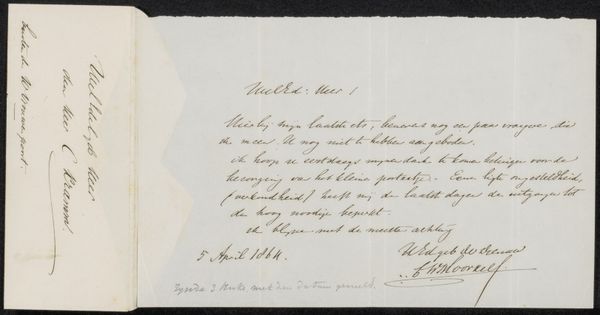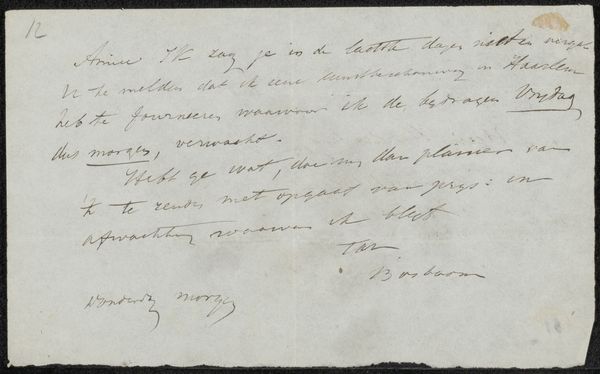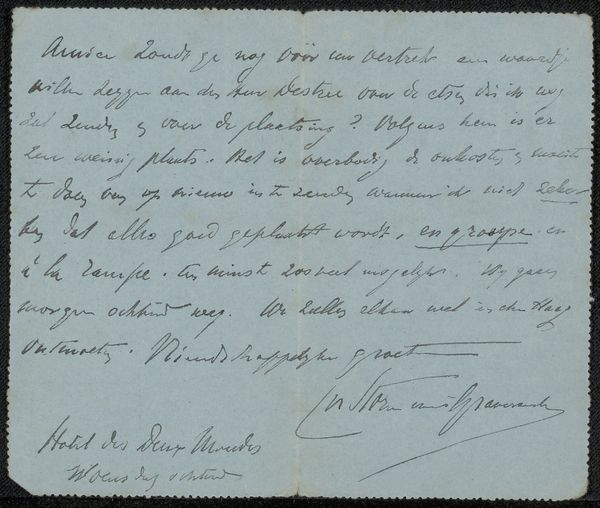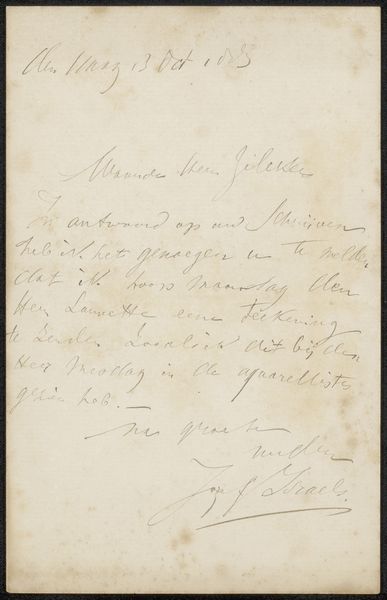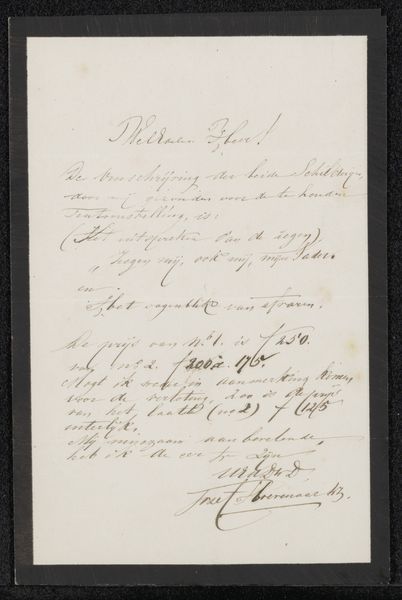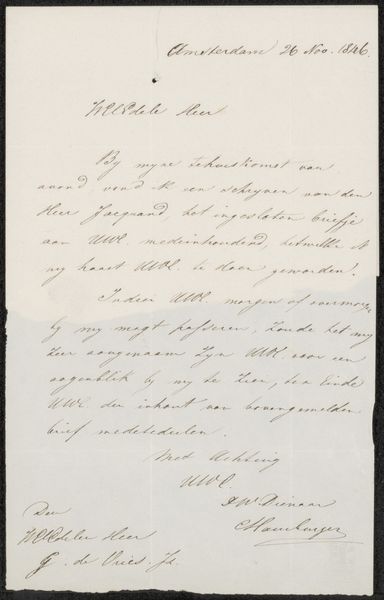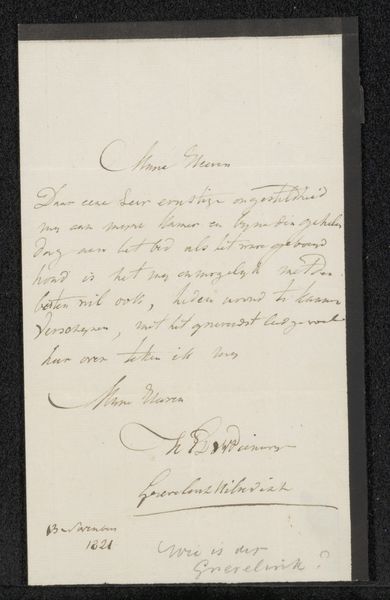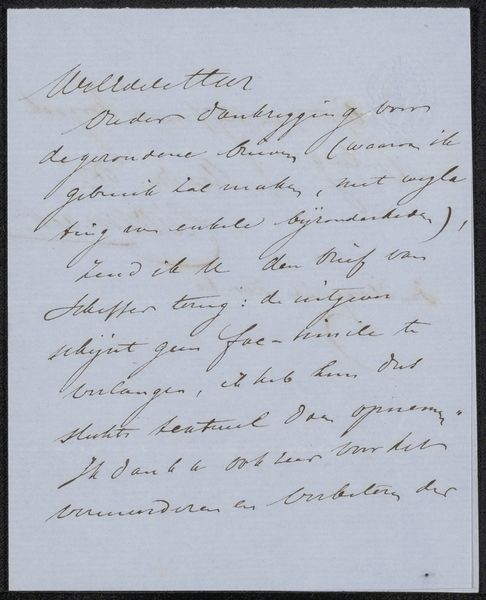
drawing, paper, ink
#
portrait
#
drawing
#
hand-lettering
#
hand drawn type
#
hand lettering
#
paper
#
personal sketchbook
#
ink
#
hand-drawn typeface
#
hand drawn
#
fading type
#
ink colored
#
sketchbook drawing
#
genre-painting
#
sketchbook art
Copyright: Rijks Museum: Open Domain
Curator: Here at the Rijksmuseum, we have a drawing titled "Brief aan Gerardus Arnoldus Nicolaus Allebé" created sometime between 1834 and 1892 by Jozef Israëls. It's executed in ink on paper. Editor: The texture of the paper is the first thing I notice. It feels almost like linen, with the gentle script floating above like a quiet conversation. The sepia tones give it an aged feeling, something akin to melancholy. Curator: Indeed. The application of ink reveals a gestural quality, typical of Israëls' draughtsmanship, which moves away from the stricter lines and geometries in favor of more fluid marks that delineate form, content, and the emotional essence of the sitter in its composition. The interplay of light and shadow, although minimal, adds depth to the character of the writing itself. Editor: Beyond the visual aesthetics, I am drawn to the social implications of a letter. Who was Gerardus Allebé, and what position of power did they hold that required such a formal address? How did letter-writing operate in that particular period, and how does that translate into relationships today? The fading type and handwriting evoke not just age, but also invite inquiry into the intimate contexts of correspondence in the 19th century, marked as it was by stark social divisions. Curator: Focusing on the construction, consider the composition as a study in contrast: the stark negative space focuses the viewer's attention to the concentration of ink that makes up the handwritten missive. The lines, forms, and overall harmony achieved creates an appealing design—even removed from the linguistic context of its subject, it remains pleasing to the eye. Editor: I find the overall impression somewhat sobering. It seems an earnest attempt at connection, though ultimately, that communication now functions as a spectral echo, raising more questions than answers. Curator: That duality you speak of invites reflection. An object designed for immediate, transient communication now serves as a window into another time, studied for its composition and form. Editor: Precisely. Art always finds a way to defy expectations.
Comments
No comments
Be the first to comment and join the conversation on the ultimate creative platform.
